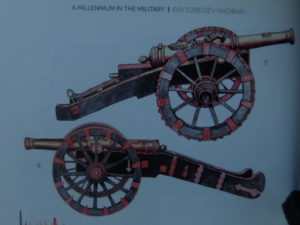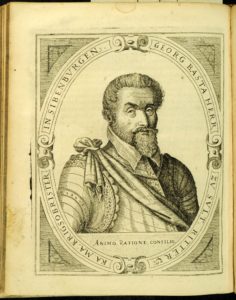Osgyán

The castle of Osgyán (Ozdany) is located in the Upper lands/Horná Zem/Felvidék, it can be found in Slovakia. It is 10 km from Rimaszombat (Rimavská Sobota) to the west. It is hard to find the way there, but once you have arrived you can see how the majestic Renaissance corner bastions and the leaking roofs fight their unbalanced last battle against the attacks of bushes, thorns, and human neglect. Now, you cannot see the above-mentioned roof as it fell victim to fire on 3 October 2019.

Before talking about the history of this castle, the sad incident must be discussed. In fact, it was not just a mere incident, according to the police it could have been arson as the fire began at several points at the same time, and despite the wet weather, it spread rapidly inward. The Slovakian ministry said that it was the owner, of the castle the Bystrica Transport Company (Bystrická dopravná spoločnosť) who can be made fully responsible for the disaster. According to the ministry, in spite of having received a huge income in 2018, the private owner had failed to apply for available grants for the maintenance and renovation of Osgyán castle.

The damage exceeds 300,000 EURO but a local major said that the fire at least highlighted the pitifully neglected condition of this Renaissance castle palace. Now, there are some hopes that Osgyán castle can be renovated in the future. However, there are a few skeptical people who say this time might come only after many long years, and they point to the renovation of Krasznahorka castle. It also fell victim to arson but the renovation has not been finished for 7 years, allegedly it will have been completed by 2023. These castles are both parts of the Slovakian and Hungarian national historical heritage, we can equally be proud of them.

There are quite a few logical questions left unanswered. Where is the responsibility of the state? What about the responsibility of the Cultural Heritage Management Office? How could such a Renaissance building be sold by the state to private owners at all? I hope that we can contribute to the rebuilding of Osgyán and Krasznahorka castles by spreading their history in the English-speaking world. However, there are many nice examples of how the local Slovakians and local Hungarians joined forces to rebuild their old castle. Personally, I would like to see it restored soon because my family had been deported (like so many Hungarian families) from Gömör County in 1946. As for Krasznahorka, you can read more about its history here:
https://www.hungarianottomanwars.com/kingdom-of-hungary/krasznahorka-and-betler/
The history of Osgyán castle
Osgyán was first mentioned in the 13th century when the initial castle was built. The Hungarian Queen Erzsébet called the Bohemian Czech Hussite mercenary soldiers of Jan Giskra into the country after 1440 to protect her son from the usurpers. They became fond of the country and decided to stay and seized huge territories in the middle and eastern parts of the Hungarian Upper Lands.
It was during this time that they also took Osgyán. The army of King Matthias took these lands back between 1459 and 1462 by either beating the Bohemian Hussites in battle or hiring them as mercenaries.
The previous owners, the Orlay (Orlle) family, were re-established in Osgyán around 1462. It is assumed that it was Orlay Miklós who turned it into a fortified castle around 1550 because it was close to Fülek castle and the Turks were heavily raiding the area. (Please, note that I use the Eastern name order for Hungarians where family names come first.) We don’t know whether Osgyán was ever taken by the Ottomans, but it is almost certain that it had to withstand their attacks. The settlement lay on the northernmost fringe of the Ottoman Empire and the inhabitants lived every day in danger.

Lord Bakos János was the next person who gained the castle in 1590. This lord had the feudal right to hold a blood court in Osgyán. It meant that he had the right to execute criminals on his own land. At this time, it was already an agricultural town. Bakos was a learned man and when the Turks took Fülek castle, he gave a home to the high school of Fülek in Osgyán at the beginning of the 17th century. We know that the castle used to be in the hands of the Szakál, Vajna, and then the Korponay and Luzsénszky families in different periods.

The present Renaissance look of the castle came from its construction during the first part of the 17th century on the foundations of the earlier fort.
The Battle of Osgyán on 14 November 1604
The castle became famous for the Battle of Osgyán when General Giovanni Basta of the Habsburg king, defeated the forces of Prince Bocskai’s captain, Németi Balázs in 1604.
I described the battle of Osgyán in my book “33 Castles, Battles, Legends” but let me share it with you here, too:
“By the first years of the 17th century, it became clear that nobody would be able to win the 15-Year War which began in 1593. The fighting Muslim and Christian forces had become equally exhausted. The Turkish and the Tatar raiders had pillaged and destroyed Transylvania and Upper Hungary above all imagination.
Yet, Emperor Rudolf I (1576-1608) wanted to carry on the war at all costs. As his treasury was empty, he tried to get money from his Hungarian noblemen. As a result, many aristocrats were accused of treason. Mostly the Protestant ones were targeted.

Soon, the wealthy Protestant lord, István Bocskai was the next target in the autumn of 1604. Bocskai used to be a great supporter of the anti-Ottoman war and as the man of the Transylvanian Prince Zsigmond Báthory, he had a leading role in the Habsburg-Transylvanian alliance against the Turks. Also, he won a decisive victory over the Muslims at Gyurgyevó in Wallachia.

Despite this, the Chief Captain of Emperor Rudolf, Belgiojoso, launched a campaign against Bocskai and besieged his castles. At the same time, the Hajdu soldiers left the Emperor and sided with Bocskai who was able to successfully resist and defeat the foreign mercenaries at Diószeg, on 15 October 1604.

This victory triggered a whole-scale rebellion against the Habsburgs. Belgiojoso fled to Kassa (Kosice, Kaschau), but the second-greatest town of the Upper Lands closed its gates before him. His army dispersed and it was further scattered by the Hajdu soldiers of Balázs Lippay and Balázs Németi.

On the other hand, Bocskai was welcomed in Kassa and he received there the authorization of Sultan Achmed I which made him the Prince of Transylvania. Bocskai’s first order was to send Lippay after the fleeing Belgiojoso to the Szepesség (Zipt Land). Then, he sent Balázs Németi with 1,000 Hajdu soldiers and 3,000 badly armed peasants (other sources talk about 4,000 Hajdus and 4,000 peasants) to defend the road to Kassa at Osgyán castle. When the Emperor’s general, Basta heard of this, he quit the siege of Esztergom in November and soon he was near to Osgyán.

Balázs Németi was not willing to withdraw to Kassa but took up positions to beat back the four-times-larger imperial army. His officers tried to dissuade him, but it was in vain. Basta was marching towards them with his 18,000-20,000 mercenaries and with numerous cannons. The general had a fearsome reputation because he was the one who had devastated Transylvania with his army just a few years ago, with bestial cruelty.

The Hungarians took themselves into the castle of Osgyán and into the small market town which was surrounded by a weak palisade. Németi had some trenches dug on the higher grounds but most of the troops were deployed behind the palisade and in the castle. There was a creek separating them from the advancing enemy, and Németi placed his only cannon at its bridge. We know the cannon’s name, it was called “Sólyom”, Hawk. The Battle of Osgyán began in earnest on 14th November.

Németi set out with 300 Hajdu riders to entice the vanguard of the Imperial army which was led by Friedrich von Hollach. Németi was withdrawing his unit under constant combat and heavy fire. The Hajdu soldiers’ maneuver worked well, but seeing the riders galloping home, the indisciplined peasant soldiers got frightened and began to run towards the castle, leaving behind “Sólyom” without firing it. The German mercenaries were on their heels, mercilessly cutting down the laggers. Németi jumped off his horse and gathered his hard men, trying to cover the withdrawal of his remaining soldiers but soon he also had to take shelter in the castle. Behind its walls, he trusted his big old arquebuses and hoped that Basta would not start a siege.

After seeing the gates shut ahead of him, General Basta had two mortars positioned in front of the castle and had its weak fence and walls destroyed in a very short time. Soon, Németi had only 500 Hajdus left in the castle and had attempted to break out several times. When the tower of the castle was blown up by the cannon fire, the captain had only 400 men remaining. Basta offered them safe conduct in the case of surrendering and it was accepted. Yet, he couldn’t stop his mercenaries when the Hajdus came out to lay down their arms. Most of them were slaughtered on the spot and only a few got away. According to German sources, the rebels lost more than 3,000 men while the imperial troops suffered 700 casualties.

Németi got shot in his left arm and was taken into captivity. Basta took him with the army and marched on towards Kassa. There, at Edelény, the general defeated the troops of the other Hajdu captain Balázs Lippay as well, towards the end of the month. Basta celebrated both of his victories on the last day of November. The execution of Balázs Németi was part of the program. The general wanted to know more about Prince Bocskai’s army, so he had Németi hung upside down on a tree for two hours but the tough captain betrayed nothing. Then, he was led to his execution, his hands tied before him.

He was scorned and cursed while he was being led to the executioner`s platform. Nobody would have expected him to attack the executioner and take away his two-handed sword with his hands roped together. But it was the very thing that happened, the Hajdu captain seized the great sword and cut down many German mercenaries in the throng before he went under their blades.

Despite his victories, General Basta was not able to stabilize his positions in the Upper Lands. He did not even try to besiege Kassa and was forced to withdraw during the winter of 1604-1605.
In the meantime, Prince Bocskai was able to gather not only the smaller noblemen around his flag but the more powerful aristocrats as well. Soon, he had occupied the bigger part of Royal Hungary and instead of the title of a king, he chose to become only Prince of Hungary. He didn’t accept the crown from the hand of the Sultan.”
The history of Osgyán after the battle
Baron Orlay István owned Osgyán in 1631 when he was appointed as Chief Comes of Gömör County. He held this office until his death, in 1641. The Transylvanian Prince Rákóczi György I and Habsburg King Ferdinand III made peace in Linz in 1645 and Osgyán was given to Bakos Gábor who became loyal to the Habsburg monarch for this. A Diet in 1647 decided in Pozsony (Bratislava, Pressburg) that as the Ottomans were still in the neighborhood, the castle had to be reinforced as protection against them. Later, the king took the castle back in 1666 because Bakos Gábor died without an heir.

Soon, the Géczy family took ownership. Osgyán was on Vienna’s side when it was attacked in 1678 by the Hungarian Kuruc rebels, but we do not know the outcome of that clash. All we know is that the fort had to be reinforced again in 1681 against the rebelling Hungarians, according to the ruling of the Diet. During the War of Independence of Prince Rákóczi Ferenc II, (1704-1711), Osgyán’s overlord was Géczy Zsigmond. His daughter was Géczy Julia who later became the wife of the Kuruc captain, Korponay János. Julia was the legendary “white woman” of Lőcse city.
At least the castle of Osgyán escaped the fate of so many Hungarian forts and the Habsburgs did not have it totally destroyed after Rákóczi’s revolution. Inevitably though, the outer walls were pulled down and the moat was filled up later by the new owners. The castle was seriously damaged in WWII and the renovation only began in the 1970s. The castle got a new roof in 2003 but the rest of the Renaissance building was still in ruins in 2006. Look at the pictures taken before the fire of 2019, and weep. (I wrote this article in 2020.)

Breaking news: reconstruction has begun in 2021 in earnest:

Dear Readers, I can only make this content available through small donations or by selling my books or T-shirts:
Please, feel free to support me with a coffee here:
You can check out my books on Amazon or Draft2Digital, they are available in hardcover, paperback, or ebook:
https://www.amazon.com/dp/198020490X or at https://books2read.com/b/boYd81

My work can also be followed and supported on Patreon: Become a Patron!http://Become a Patron!
[wpedon id=”9140″]

https://hungarianottomanwars.myspreadshop.com/all

Here are more pictures from 2020, after the fire, made by Szegedi Szabolcs:


































